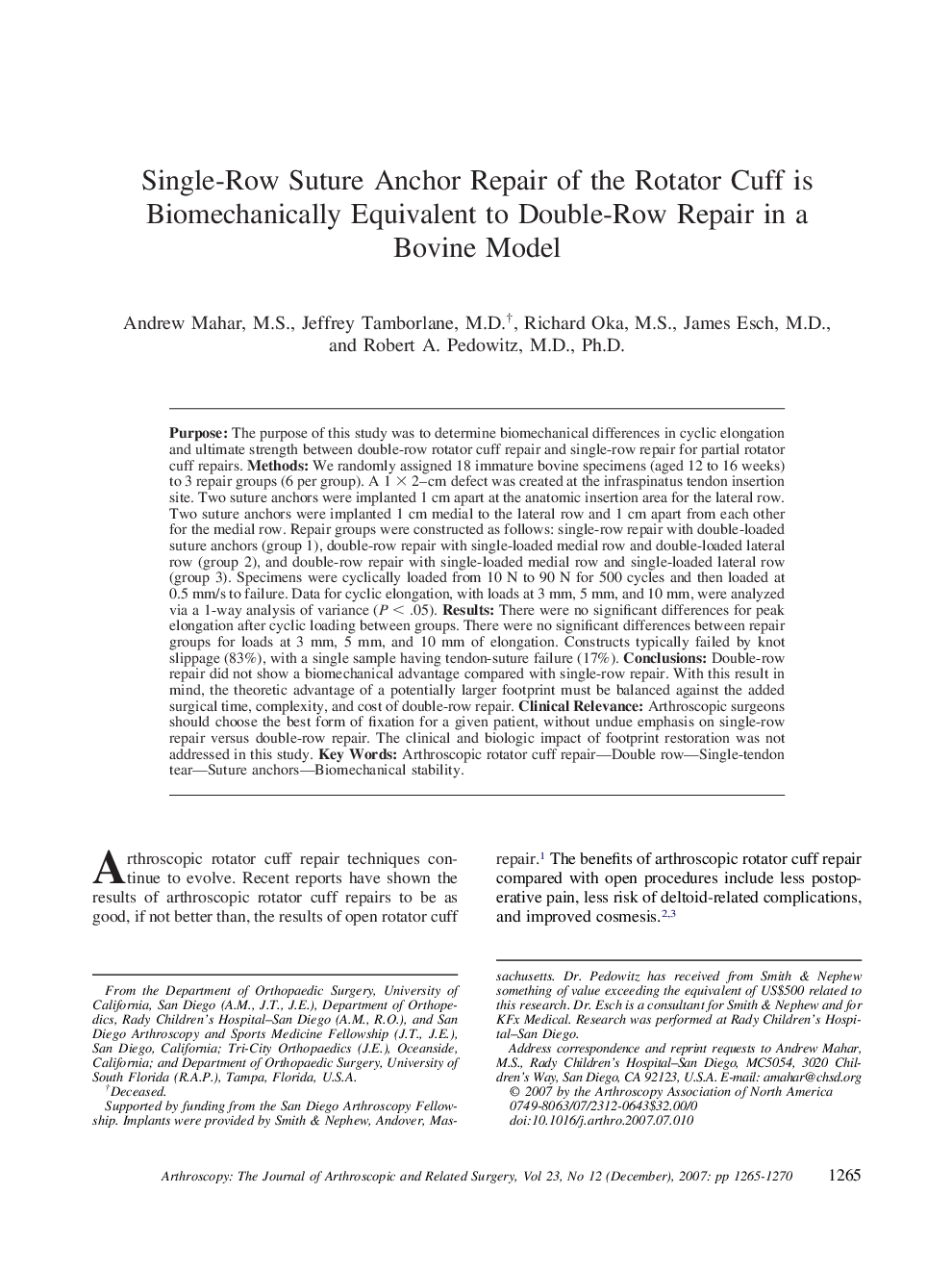| Article ID | Journal | Published Year | Pages | File Type |
|---|---|---|---|---|
| 4045299 | Arthroscopy: The Journal of Arthroscopic & Related Surgery | 2007 | 6 Pages |
Abstract
Purpose: The purpose of this study was to determine biomechanical differences in cyclic elongation and ultimate strength between double-row rotator cuff repair and single-row repair for partial rotator cuff repairs. Methods: We randomly assigned 18 immature bovine specimens (aged 12 to 16 weeks) to 3 repair groups (6 per group). A 1 Ã 2-cm defect was created at the infraspinatus tendon insertion site. Two suture anchors were implanted 1 cm apart at the anatomic insertion area for the lateral row. Two suture anchors were implanted 1 cm medial to the lateral row and 1 cm apart from each other for the medial row. Repair groups were constructed as follows: single-row repair with double-loaded suture anchors (group 1), double-row repair with single-loaded medial row and double-loaded lateral row (group 2), and double-row repair with single-loaded medial row and single-loaded lateral row (group 3). Specimens were cyclically loaded from 10 N to 90 N for 500 cycles and then loaded at 0.5 mm/s to failure. Data for cyclic elongation, with loads at 3 mm, 5 mm, and 10 mm, were analyzed via a 1-way analysis of variance (P < .05). Results: There were no significant differences for peak elongation after cyclic loading between groups. There were no significant differences between repair groups for loads at 3 mm, 5 mm, and 10 mm of elongation. Constructs typically failed by knot slippage (83%), with a single sample having tendon-suture failure (17%). Conclusions: Double-row repair did not show a biomechanical advantage compared with single-row repair. With this result in mind, the theoretic advantage of a potentially larger footprint must be balanced against the added surgical time, complexity, and cost of double-row repair. Clinical Relevance: Arthroscopic surgeons should choose the best form of fixation for a given patient, without undue emphasis on single-row repair versus double-row repair. The clinical and biologic impact of footprint restoration was not addressed in this study.
Related Topics
Health Sciences
Medicine and Dentistry
Orthopedics, Sports Medicine and Rehabilitation
Authors
Andrew M.S., Jeffrey M.D., Richard M.S., James M.D., Robert A. M.D., Ph.D.,
